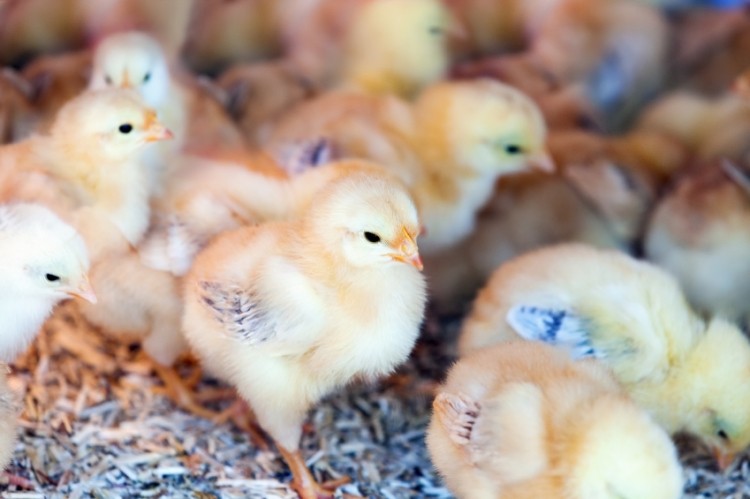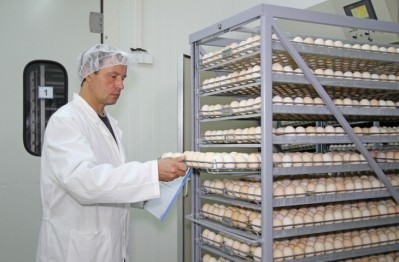Reports from IPPE 2016
Digestive and nutrient requirements of young chicks need to be recognized: Hamlet Protein

David Nelson, technical sales manager at Hamlet Protein, spoke about how critical early nutrition is for broiler growth and development at the TechXchange program during the Atlanta trade show, held the last week of January.
He said there are, of course, many factors that are involved in broilers reaching their full potential from housing to management to feed.
One crucial element, said Nelson, is quality of the protein fed to the bird in the starter period.
“But we need to define what the starter period us. On average, we say 10 days but that is not a cut and dry answer. Perhaps, we should say the duration or length of time that birds are on that first feed and that varies greatly,” he said.
It is vital to look closely at this life stage, said Nelson given that today, with 38 days the average time given to birds to reach the necessary market growth weight, the starter period represents roughly 25% of the chicken’s life. Back in the 1970s, when the broiler had 60 days to reach market weight, the starter period only embodied 15% of the bird’s life, he noted.
Chick development
Nelson said the industry should be aware of the rapid development in chicks’ in the first week post hatch:
“There is development of the immune system, which happens during the embryonic phase and continues for the first few weeks post hatching. You do have some passive immunity through amniotic fluid in yolk but newly hatched chicks have a very low resistance to pathogenic bacteria and virus.
“There is development of the organs, heart, liver, and digestive tract to support development of muscles and bones. The development of the digestive tract is much faster than the rest of the body. However, the digestive tract and immune system are very immature at hatch. Young birds also have a very limited ability to thermo-regulate.
“If a sub optimal feed is provided to these birds, they are going to pull from the yolk as an energy source rather than for development in immunity.
“So with a very undeveloped digestive tract, limited capacity for these birds to absorb nutrients and, in addition, a time lag – 36 hours or 48 hours after hatch – before the chick will have access to feed for the first time
“Thus with the rapid growth, the digestive and nutrient requirements of young chicks are very different from the older birds and we need to recognize that and optimize feed for the young bird,” he said.
Due to the low enzyme production, starter feed for broiler chicks needs to easily digestible and highly bioavailable to avoid the feed passing through the bird and going out through the faces.
In addition, the level of anti-nutritional factors in feed needs to be considered, continued Nelson.
“High levels of trypsin inhibitors, oligosaccharides, antigens, lectins and phytate bound phosphorus will all increase feed loss.
If the feed is less digestible that the bird has the capacity to digest, you are going to have low nutrient utilization and loss of growth potential,” he added.
Starter feed trial in antibiotic and anticoccidial free diets
Nelson told us Hamlet Protein has seen increased demand in the US for its starter feed for chicks, HP AviStart, which is produced by co-processing yeast and soya.
The company carried out a trial with Southern Poultry Research in the US recently, he said, in order to determine how the starter performed in antibiotic and anticoccidial free diets in commercial broiler production.
The results, said Nelson, showed the addition of the product improved FCR by 4 points and improved body weights at the end of the cycle with only a 5% inclusion rate.
“The birds were placed on old litter in the trial. It was not sterile environment. It was designed to replicate a commercial poultry barn,” said Nelson.
The study included 2,400 Cobb 500 broilers and the duration of the trial was 35 days, with 16 replicates per treatment (50 birds/pen), said the company.
The broilers were fed three different diets by replacing soybean meal with HP AviStart. Starter diets were fed in crumble form and the common grower diet was fed in pelleted form.
No antibiotics or anticoccidials were used in the feed but all chicks were spray vaccinated with a commercial coccidia vaccine at the recommended level prior to placement, he said.












